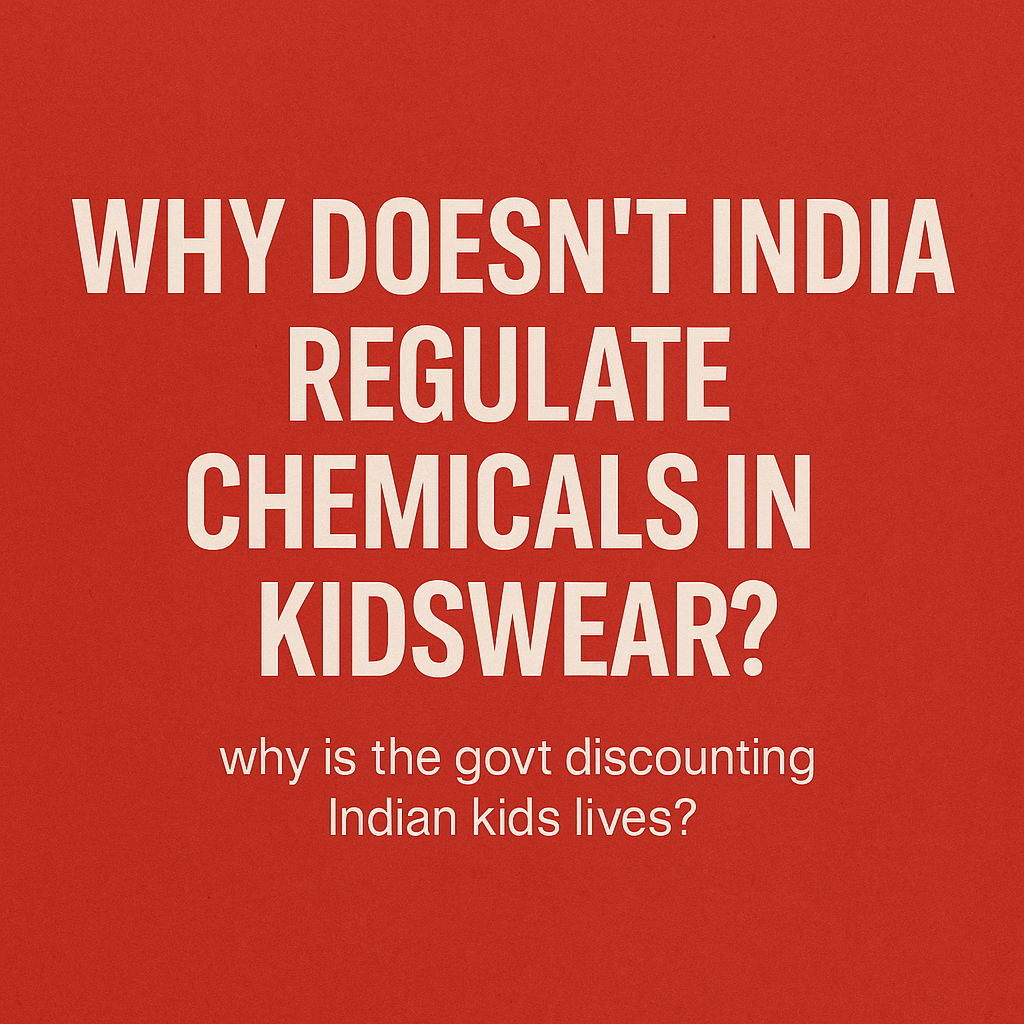
Why Doesn’t India Regulate Chemicals in Kidswear? And Why TOFU Won’t Wait
Share
At TOFU, we design more than clothes — we design safety. Every time we send a new collection for independent lab testing, we’re reminded of one uncomfortable truth:
India has no mandatory regulations for harmful chemicals in children’s clothing.
While Europe, the United States, and even some Southeast Asian countries have strict limits on lead, phthalates, formaldehyde, and azo dyes in kidswear, Indian laws remain silent. There’s no legal requirement for brands to test, limit, or disclose toxic substances in the clothing Indian children wear every day.
So the question is — why are Indian children being left unprotected?
What’s at Risk?
Clothing isn’t just fabric. Before it reaches your child’s wardrobe, it’s often soaked, dyed, printed, coated, and finished using a mix of chemicals that can include:
- Lead-based dyes for bright reds, yellows, and greens
- Formaldehyde to make clothes wrinkle-free
- Phthalates in plastic prints or vinyl patches
- Azo dyes that can break down into carcinogenic amines
Many of these substances are banned or tightly regulated in other countries for children under 12. But in India, there’s no central regulation governing what chemicals can be used in a baby’s romper, a toddler’s T-shirt, or a child’s nightwear.
No warning. No testing. No accountability.
The Science is Clear
Toxic chemicals in children’s clothing have been linked to:
- Skin allergies, eczema, and respiratory irritation
- Endocrine disruption (hormonal imbalance)
- Cognitive delays and learning difficulties
- Long-term cancer risk (some azo dyes and lead compounds are classified as carcinogens)
Children are the most vulnerable because their skin is thinner, they put things in their mouths, and their organs are still developing. Even small, repeated exposures can have long-term effects.
The World Regulates. India Doesn’t.
- EU REACH Regulation limits over 1,300 harmful substances in children’s clothing.
- US CPSIA bans lead and phthalates in kids’ apparel and enforces strict testing.
- Vietnam and Bangladesh, major exporters, test products for these chemicals before shipping to regulated markets.
Inside India, unless a brand voluntarily tests its products, there are no binding rules. And that’s the problem — safety shouldn’t be optional.
What TOFU Does Differently
We refuse to cut corners or hide behind loopholes. Every TOFU product is made with:
- Only natural, breathable fabrics like certified 100% cotton and linen
- No synthetic coatings or plastic-based prints
- No lead-based dyes, phthalates, or formaldehyde — ever
- Every batch lab-tested to meet OEKO-TEX® and GOTS safety standards
- Full transparency about every material that touches your child’s skin
We do this not because the law demands it, but because it’s the right thing to do.
Our Message to Indian Lawmakers
Indian children deserve the same level of protection as children anywhere in the world. It’s time to:
- Establish clear chemical safety regulations for kidswear
- Mandate testing and certification for all children’s apparel, domestic or imported
- Ban toxic dyes, harmful prints, and unsafe coatings
- Make label transparency a legal requirement
India leads the world in textile production. It can lead in textile safety too — but action is needed now.
Until Then, Choose Safe. Choose Smart.
At TOFU, we’re part of a new generation of kidswear brands raising the bar — not because we have to, but because children’s health demands it.
We’ll keep testing, disclosing, and pushing for change until India’s laws catch up with what kids deserve.
